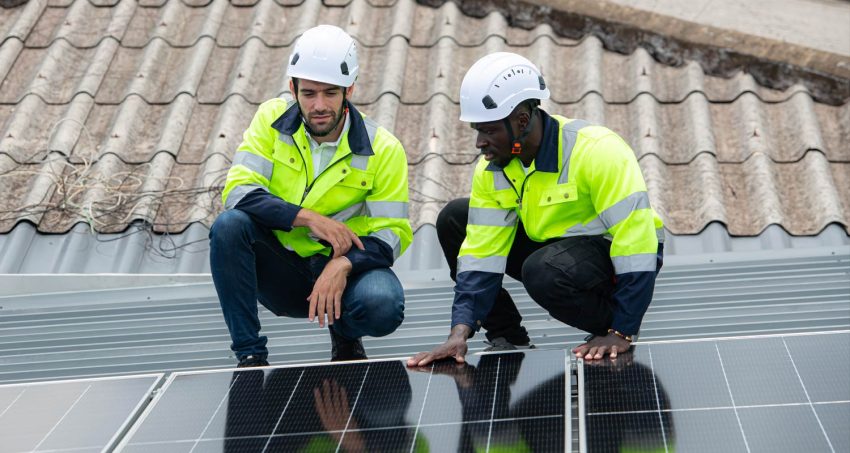 The Organisation Undoing Tax Abuse (Outa) has asked homeowners and businesses who have private solar installations to pause any plans to register their systems with energy regulator Nersa until Outa and Eskom resolve an ongoing dispute.
The Organisation Undoing Tax Abuse (Outa) has asked homeowners and businesses who have private solar installations to pause any plans to register their systems with energy regulator Nersa until Outa and Eskom resolve an ongoing dispute.
Eskom’s small-scale embedded generation (SSEG) registration initiative was introduced in the early 2020s, with a ramp-up in 2023, the worst year of load shedding on record, which also happened to coincide with a boom in private solar installations.
“Outa and Eskom Distribution held a constructive meeting over the solar PV compliance and registration requirements. At the meeting, it was clear to both parties that Eskom Distribution is still busy addressing a number of matters that will impact the utility’s compliance and registration requirements for low-voltage, SSEG systems connected behind the meter on a customer’s premises,” Outa said in a statement late on Monday.
“Eskom Distribution has agreed to consider the issues Outa raised and will respond in due course; until Outa is satisfied that the registration requirements are necessary, Outa suggests that homeowners and businesses hold off on registering.”
According to the statement, Outa expressed concern that Eskom’s requirements related to the registration of private solar systems were “restrictive and costly”, especially towards:
- Prepaid electricity customers with conventional prepayment meters on Eskom Homelight tariffs that have installed or intend to install low-voltage solar PV or bulk energy storage systems;
- Post-paid electricity customers with conventional credit meters on Eskom Homepower tariffs that have installed or intend to install low-voltage solar PV or bulk energy storage systems; and
- Electricity customers on the Eskom Homeflex time-of-use tariff that have installed or intend install low-voltage solar PV or bulk energy storage systems and do not export energy into the Eskom network.
“It is Outa’s position that the current registration and compliance requirements for customers with low-voltage solar PV or bulk energy storage systems can be viewed as irrational, unfair, anti-poor and discriminatory against households and businesses who have taken action or intend to take action to reduce their energy consumption from the grid,” said Outa.
One of the registration requirements Outa has a particular issue with is that homeowners and business owners have their systems signed off by a professional registered with the Engineering Council of South Africa as opposed to the certificate of compliance issued by an electrical contractor or electrician. Getting this sign-off is estimated to cost about R20 000 on average.
Safety
One of Eskom’s main arguments for placing stringent registration requirements on households and businesses is to promote safety at installation and grid level. Outa’s counterargument is that if safety is a concern for Eskom, then the various regulatory levers governing solar installations are sufficient. These include the Occupational Health and Safety Act, the electrical installation regulations and technical standards set by the South African Bureau of Standards. Added to these are amendments currently under way to the SABS code of good practice for low-voltage electrical installations, which Outa said will encompass the majority of residential systems installed.
“It is Outa’s view that Eskom’s current registration and compliance requirements may be overstepping its regulatory authority, safety mandate and enforcement authority,” said Outa.
Read: Eskom targets 32GW green energy shift by 2040
Responding to questions from TechCentral in July, Eskom said it was important that homes and businesses register their SSEG installations because it was a regulatory requirement of Nersa. Knowing how many private generation systems are connected to the grid and how large they are is becoming increasingly important as many municipalities prepare to allow their customers feed their excess power back onto the grid.
As well as allowing Eskom to better predict fluctuations in the demand and supply of electricity for different areas, knowledge of where SSEG systems are located is critical for ensuring maintenance is performed safely by technicians so they are not surprised by sudden power surges from private systems.
 On the contentious issue of compliance sign-offs, Eskom said: “A critical aspect of compliance is ensuring that installations meet safety standards. There is ongoing debate regarding who is authorised to sign off on these installations, which in turn has an impact on the cost to the consumer. Eskom and municipalities are awaiting a formal decision from South African Bureau of Standards on this matter.”
On the contentious issue of compliance sign-offs, Eskom said: “A critical aspect of compliance is ensuring that installations meet safety standards. There is ongoing debate regarding who is authorised to sign off on these installations, which in turn has an impact on the cost to the consumer. Eskom and municipalities are awaiting a formal decision from South African Bureau of Standards on this matter.”
Outa said Eskom has asked for some time to attend to the questions it posed to the power utility and has advised that customers wait for this process to unfold.
Speaking to eNCA on Monday, energy analyst and Outa advisor Chris Yelland was critical of what he described as Eskom’s “confusing” stance on SSEG installations.
Read: Cut electricity prices for data centres: Andile Ngcaba
“We are confused as to Eskom’s stance on this matter because not only have we been encouraged to reduce demand – we see regular radio and TV adverts to this effect – but we’ve been incentivised to install solar PV and battery systems that national treasury has provided incentives to households and business to do.
“Therefore, it seems to us to be irrational that Eskom should now be making it very difficult and expensive for the approximately 40 000 systems connected to Eskom’s low-voltage network,” said Yelland. – © 2025 NewsCentral Media
Get breaking news from TechCentral on WhatsApp. Sign up here.
Eskom wants your solar system registered – but what does that actually mean?

